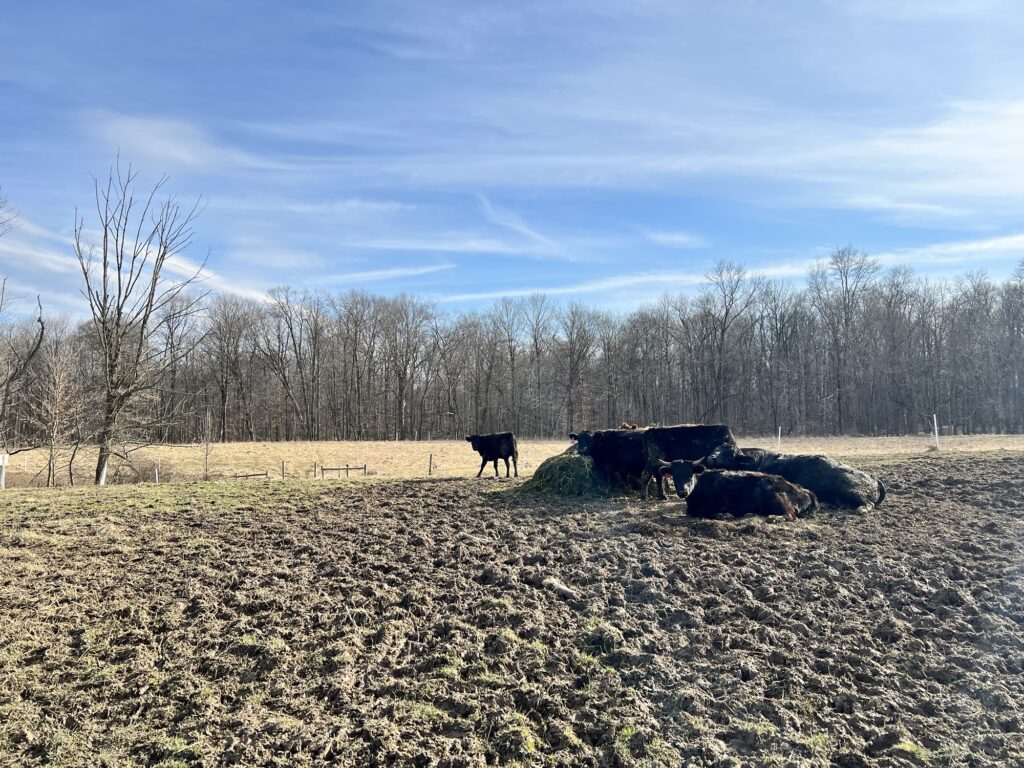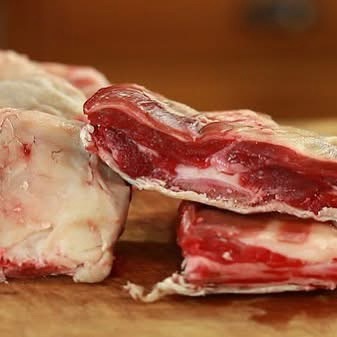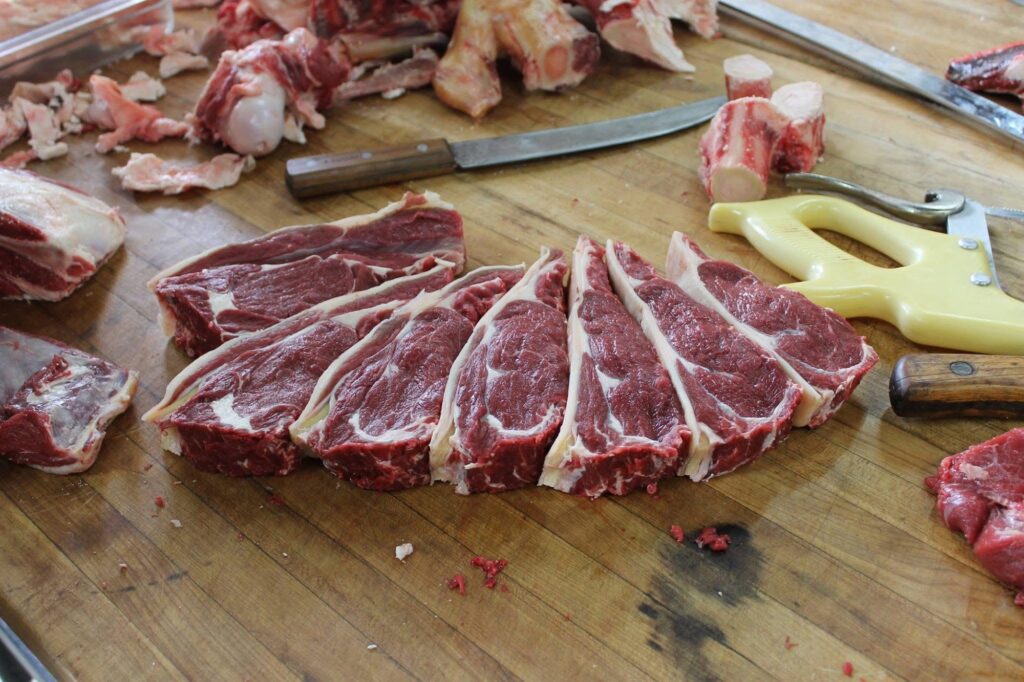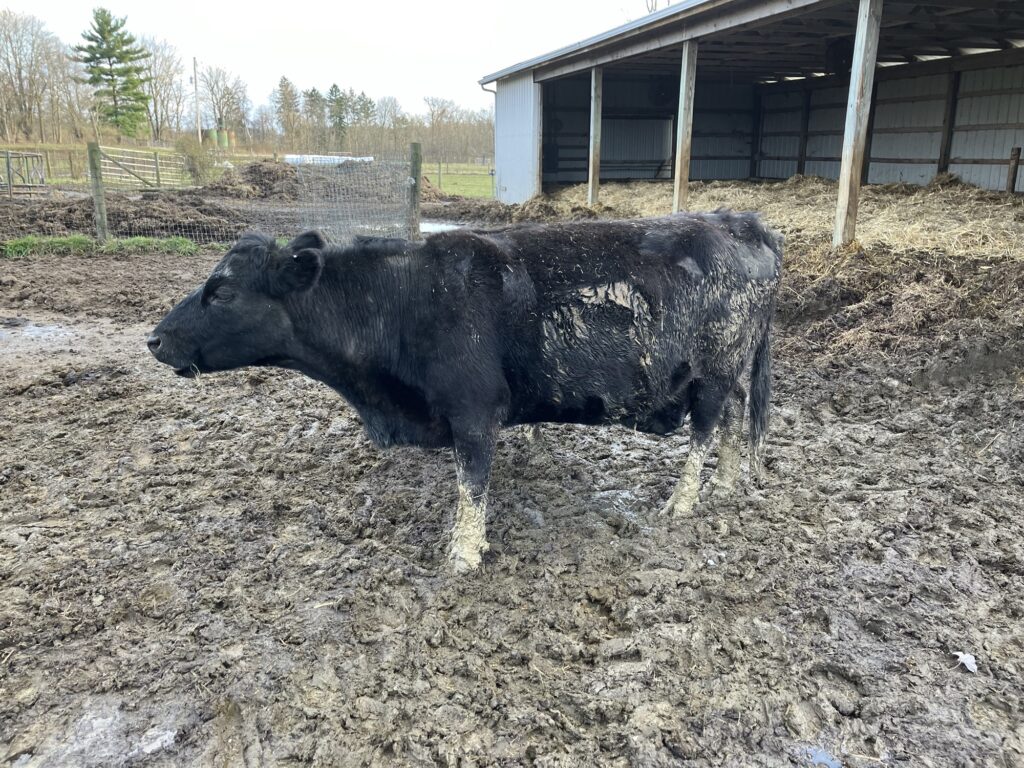Tips for noobs
What are your best work-smarter-not-harder tips for homesteading? What do you wish you would have known going in?
What are your best work-smarter-not-harder tips for homesteading? What do you wish you would have known going in?
In my last blog, I discussed how to find a plant to process your beef. In this edition, we’ll look at using social media to find customers and setting up a website.
Of course, word-of-mouth advertising is the cheapest way to advertise, but you may live in a small town or have already exhausted your possibilities through your existing network. One rancher friend of mine noted recently, “Many of my neighbors are also trying to sell directly to consumers and my small town is saturated with supply. What I need is more prospects.”
Selling directly to consumers: How to find customers and market your beef Read More »
SellingIn less than an hour, we’ll show you how we’ve used Facebook to enhance existing marketing campaigns and uncover new opportunities. Whether you’re deep inside of a marketing team or the leader of a small team of salespeople, this webinar will help you understand how to match Facebook‘s advertising platform to your sales cycle to generate more leads and get better results from your ad spend.
USING FACEBOOK TO GENERATE FARM AND RANCH LEADS Read More »
SellingWhat to do or not do about a retained placenta.
Leave alone retained placentas Read More »
Herd HealthMore ideas, to help you through calving season….
Pre & Post calving toolbox Read More »
Herd HealthThis article gives 7 good reasons to begin homesteading.
https://www.theprairiehomestead.com/2015/01/start-homesteading-today.html
Reasons to Homestead Read More »
Homesteading
If you raise livestock, chances are you’ve dealt with mud. Every year is different, some more challenging than others when it comes to managing livestock and mud. Here is a great DIY video on building a heavy use pad for feeding or high-traffic areas on your farm or homestead.
The Wranglers at Irish Dexter Cattlemen are pleased to announce that we have a butcher on our team now! The folks at PipeDreams Butchery, located near Memphis TN, will be writing articles, doing videos and more. They are familiar with Dexters, as they used own them, milk them and breed them.
They are active on our Facebook group, so if you have a question about processing and post it…don’t be surprised if they answer you. If you have things that you would covered from a butchers perspective, please let us know and we will try to get it covered for you. All contributions, will first appear in the free monthly newsletter and then be archived in the membership Gazzette.
We personally use them for all our processing and are very happy with our cuts, the feedback on our animals and extra services including sausages, ancestral beef, smoking and curing. Very excited to have them participating in our beef community!
Prepare, before calving season starts.
https://www.bovinevetonline.com/news/industry/avoiding-calfcicle-calving-winter-weather?
Calving In Cold Weather Read More »
Herd HealthIf I had a dollar for every time I said, “I’ll remember that later” I’d be a millionaire. But, the times I actually do remember are really rare! If you’re like me, and you need a little help creating better permanent records here is a great podcast to listen to:
https://podcasts.apple.com/us/podcast/livestock-walaau/id1580454679?i=1000611070012
Financial Record Keeping Read More »
Farm ManagementI really enjoyed listening to this Chute Side podcast with Dr. Ryan Rathmann on the definitions and nuances of line breeding vs. inbreeding. As a beef producer he favors cross breeding, but I got a lot of good take-aways for my registered/purebred Dexter breeding program. He talks about the benefits line breeding can add to your herd, such as uniformity in offspring. He also talks about challenges and down sides to line breeding, and how to avoid.
https://podcasts.apple.com/us/podcast/chute-side/id1468813469?i=1000474332264
Line Breeding vs. Inbreeding Read More »
Farm ManagementA good read on the current cattle market trends. Understand the market so you can adjust your sales prices and purchases for maximum yield.
Cattle Worth More than Diamonds Read More »
Farm ManagementMobile butchering, also called on-farm butchering definitely has its share of challenges. But, there are a few who are making it work, and excelling in this field! Farmers and producers are looking for options that minimize stress to the animal and cut out long transportation times to a butcher shop. Have you used a mobile butcher unit? Would you be willing to pay for a more costly service if it brought the benefits of an on-farm butchering?
Ever wonder if you’re missing out on some great cuts because they’re not as common, or you don’t know how to prepare and cook them? Check out this video and you might learn about a steak cut you haven’t heard of, or gain a new tip on cooking and prepping a tried and true favorite.
Favorite Steak Cuts Read More »
Beef
St. Patricks Day is coming up, and what better way to celebrate the day than with some home cooked, Dexter corned beef! The link below is to a recipe I’ve been using for several years with great success. Corning is a traditional way of curing beef meat. It does take time, so you want to give yourself 5-7 days. This recipe does not use curing (also called pink) salt so it is nitrate free. You can add beets if you’d like the traditional color, or leave them out for just as tasty (though less colorful) corned beef.
https://www.growforagecookferment.com/how-to-make-corned-beef/
Corned Beef Recipe Read More »
Beef
Dexters are a perfect size for beef home butchery. Here is a great primer on home butchering, complete with a list of tools and helpful suggestions.
https://www.artofmanliness.com/living/food-drink/a-primer-on-butchering-at-home/
Butchering at Home Read More »
BeefThe article below has great tips on keeping helpful information about your livestock. Learn to run your farm, ranch or homestead more efficiently by keeping track various numbers year to year. Measure production in your breeding stock, milk cattle, and beef cattle.
By Shelley Hatfield/Whippoorwill Pines Farm

Part #4 of this series is MUD, ugh!!! I’m thinking that most of us have dealt with mud at one point or another. Some of us deal with mud more than others. Right now we are dealing with a lot of mud around my place. You have to really watch foot rot and thrush when you are dealing with mud. Also you have to make sure they aren’t standing in mud because that makes it hard for them to stay warm. Even if it is only their legs that are caked in mud. If you don’t have much room for them to move around, you might want to add gravel and/or wood chips to help with the mud. Another way to help them stay off mud is to do rotational grazing in the winter. This lessens the chances that your pastures will turn to mud. The cows will be moving all the time and won’t be staying in one area. I hope these little articles are helping you all!! Happy Winter!!
Keeping Cows in the Winter Part #4 Read More »
BeefKefir grains are yet another product of human domestication
Old Cheese, New Data: Dairy Fermentation in Bronze Age China Read More »
Milking & DairyJuliette Albrecht is a contributing member of the Irish Dexter Cattlemen, who was born and raised in the dairy industry. She has helped a fellow IDC member save their cow. Look for her articles each month and for past articles in the Gazette.
Juliette also runs two Facebook groups. One is under her name. The other is called The Science of Owning Dairy Cattle.
☆☆ Milk Fever
It scares so many dairy cow owners, and for a rightful reason. However I hope that I can shed some light on it and take away a bit of that fear. Hypocalcemia (milk fever) is brought on by the sudden demand for calcium that comes prior to delivery and directly afterwards. This taps her muscles, which carry that, heavily. In a pre calving scenario it will affect labor, since the cow needs muscles to contract. Often in this case she will need assistance. Characterized by lethargic movement, dull, dark eyes, and drop in body temperature, it can also lead to her going “down.”
●● Prevention
First calf heifers are less prone to this, but it CAN happen in them. Commonly it affects 3rd lactation and beyond. From the time she delivers her calf you are either setting her up for a great following lactation, or one doomed to fail. It all start with NUTRITION. Dairy cattle are beautiful, but oh so delicate. She needs fiber, energy, starch, protein, bypass protein and minerals to simply survive. (Keep an eye out for Mariah Gull and her weekly posts regarding this subject!) When a cow calves in she loses body weight rather rapidly. During this time she “milks off” condition. Peak is considered to be day 30 to 90 in milk. If she is being fed correctly, she will not become too thin. Coupled with a good deworming protocol, she will slowly regain weight. At roughly day 80 she ideally will be bred back, and than her body weight will continue to rise. Grain should rise as she peaks to meet her milk volume, than slowly decrease as it falls. If she goes into late stage lactation either too thin or on the alternate, overweight, she is being setup for metabolic problems. During the dry period I either cut grain off completely (during spring and summer grazing, when forage quality is high) or feed a 2 to 3 lb per head feeding rate during the fall and winter.
Transition refers to the time before estimated due date. This commonly starts at 3 weeks out from calving, and technically extends to 30 days in milk. This is my protocol.
1) stop salt access, as it increases the chance of edema.
2) feed either a high fiber, grassy hay or have her graze similar.
3) feed 3 lbs a day of our parlor grain (18 percent protein)
4) top dress with the negative DCAD Soy Chlor
Five to seven days prior to delivery her appetite will drop. If it is significant I give B Complex.
On this protocol I see very little metabolic problems. However I always give Bovikalc to…
A) an assisted birth
B) twins
C) a cow with a known history for metabolic problems (milk fever, metritis, ketosis)
Should she go down, IV calcium is the only way to get her back up.
A cow that has had milk fever typically never reaches her full potential in milk volume for that lactation.
Milk Fever – Prevention and treatment By Juliette Albrecht Read More »
Milking & DairyHope this simple spreadsheet shows you the different levels that you can participate.
An example of an entry level participation is … access to our gazette and all the past articles in the Tips and Tricks Newsletter, many magazines , the ADCA, PDCA and Legacy publications in clipboard formats with an easy to use search feature…you will need to spend $20. This feature has allowed me to help so many when they have a specific question about a topic we have already covered.
You will need decide your level of participation, register and then enjoy your subscription benefits.
We are always looking for people to help. If you want to join an exciting and dynamic team…reach out!
Do you want to subscribe, but you don’t know at what level? Read More »
General SellingThis lesson is a game changer. It is probably the most important lesson you will ever learn about how to market your farm, yourself, and your products. WARNING! Watching this will change everything you thought on how to market your farm.
Start with why — how great FARMERS inspire action Read More »
Selling